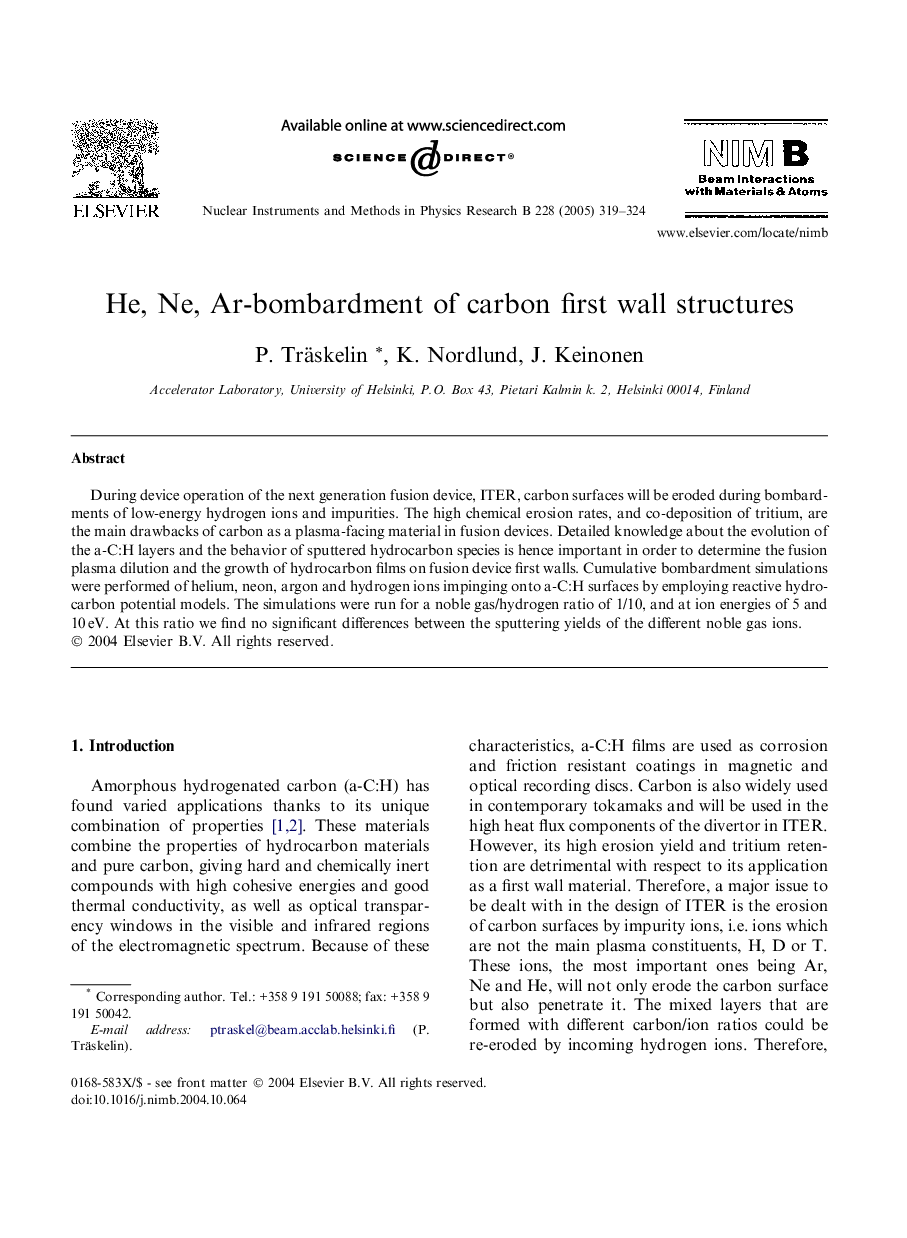| Article ID | Journal | Published Year | Pages | File Type |
|---|---|---|---|---|
| 9818425 | Nuclear Instruments and Methods in Physics Research Section B: Beam Interactions with Materials and Atoms | 2005 | 6 Pages |
Abstract
During device operation of the next generation fusion device, ITER, carbon surfaces will be eroded during bombardments of low-energy hydrogen ions and impurities. The high chemical erosion rates, and co-deposition of tritium, are the main drawbacks of carbon as a plasma-facing material in fusion devices. Detailed knowledge about the evolution of the a-C:H layers and the behavior of sputtered hydrocarbon species is hence important in order to determine the fusion plasma dilution and the growth of hydrocarbon films on fusion device first walls. Cumulative bombardment simulations were performed of helium, neon, argon and hydrogen ions impinging onto a-C:H surfaces by employing reactive hydrocarbon potential models. The simulations were run for a noble gas/hydrogen ratio of 1/10, and at ion energies of 5 and 10Â eV. At this ratio we find no significant differences between the sputtering yields of the different noble gas ions.
Related Topics
Physical Sciences and Engineering
Materials Science
Surfaces, Coatings and Films
Authors
P. Träskelin, K. Nordlund, J. Keinonen,
